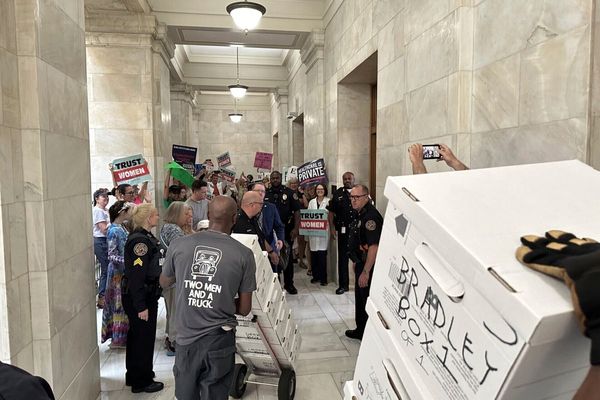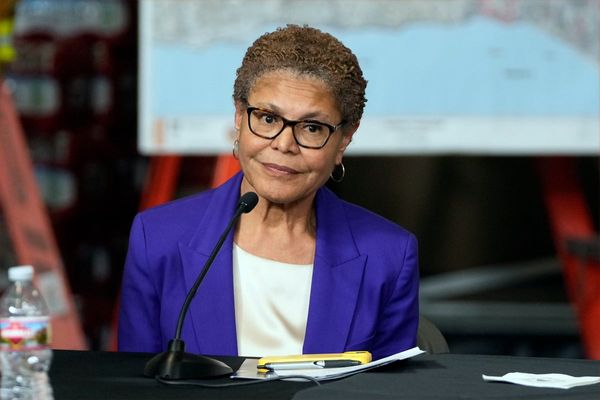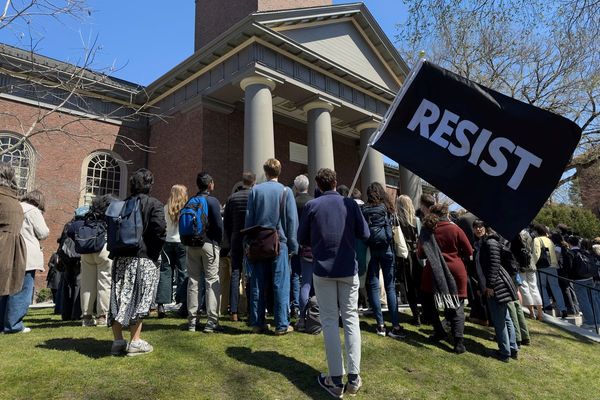
For the first time in living memory Australia is going into an election campaign facing not just an outside chance, but a strong probability, of a hung parliament.
A mid-February YouGov poll with an impressive sample size put the likelihood that neither party would reach the magic figure of 76 seats in the 150-seat House of Representatives at 78%. A month later the same poll found Labor had improved its position in terms of the number of seats it was projected to win (though with a primary vote even lower than in 2022), but still put the chances of neither party having an overall majority at 61.3%.
Before the 2022 election the Coalition held up the spectre of “instability and chaos” if no party was returned with a majority. Labor won just enough seats to govern in its own right, but 16 crossbenchers were elected in the House of Representatives, the largest number since 1934. Since then two Liberal MPs (Russell Broadbent and Ian Goodenough) and one National (Andrew Gee) have left their parties to also sit on the crossbench.
Given the changed arithmetic in 2025, dire predictions of what might eventuate have been expressed in some quarters. The Australian has warned against an impending “parliamentary flea circus” and a “godawful mess”.
Rob Oakeshott, one of the independents who held the balance of power after the 2010 election, says fears of chaos are misplaced.
He says the current crop of crossbenchers, many of whom are likely to return, are “pretty smart operators” who will be able to negotiate well in the country’s interest.
He sees a divide between the political rhetoric of “captain dickheads” and reality politics, “which is the hard grind, doing things which are difficult … that’s the captain sensible space”.
“And there are some really good people on the crossbench at the moment who are captain sensibles.”
But with the election campaign only now formally getting under way, a lot can happen before anyone begins that kind of negotiation.
A ‘seismic shift’
Australia waited 17 tortuous days after the 2010 election – the last time there was a hung parliament – to find out who had cobbled together a minority government.
The incumbent Labor party under Julia Gillard and the Coalition challengers led by Tony Abbott needed to woo the six crossbenchers.
Adam Bandt, now the Greens leader, sided with Gillard. Tony Crook, a Nationals MP who chose to sit on the crossbench, gave his support to the Coalition, and Andrew Wilkie threw his lot in with Gillard after a promise of pokies reform (a policy later watered down) and doubts over Abbott’s financial promises.
Then there were three.
The colourful Queenslander Bob Katter backed Abbott, leaving Tony Windsor and Oakeshott in play.
On the 17th day, it took Oakeshott 17 minutes to tell an impatient Australia that he would support Labor.
Since then, the long-term decline in support for the major parties has accelerated, and the independents’ popularity has soared.
As well as YouGov, the latest Newspoll and the latest Essential report show almost one in three voters intend to vote for someone other than the major parties.
After the 2022 election, the large and long-running Australian Election Study noted a “large-scale abandonment” of the major parties. Prof Ian McAllister, who co-authored the study, described it as a “seismic shift in voting behaviour” that elected four Greens in lower house seats as well as a much larger group of independents than in the previous parliament.
In his Quarterly Essay, Minority Report: the New Shape of Australian Politics, George Megalogenis writes that the crossbench “skews towards urban Australia and is dominated by professional women who have had a life before politics”.
“A parliament that looks more like the people it serves carries the promise of new ideas to test an economic model that has outlived its usefulness and a social model that still falls short of our egalitarian ideal,” he writes.
“But it also risks forming into a new gridlock if the major parties and crossbench are in direct competition for seats – namely, Labor v Green, and Liberal v teal.”
The crossbench is unlikely to look exactly the same after this election. Climate 200 is supporting 35 campaigns, 12 up on last time – some are also among the candidates supported by the Community Independents Project. A redistribution late last year is another source of uncertainty in some Victorian, NSW and WA electorates.
More than a dozen sitting MPs are retiring at this election, so those spots lose the benefits (or disadvantage) of incumbency.
But given the polling scenarios – YouGov projected a median result of 73 seats for the Coalition to Labor’s 66, leaving a crossbench of 11 – all sides are thinking hard about the strategy that may deliver them power, or at least influence.
The result is inconclusive – then what happens?
If no party wins an overall majority, the Coalition and Labor will look to members of the crossbench to guarantee “confidence and supply”. They need them on side to stop any no-confidence motion against the government, and to vote for appropriation bills so the government can spend money to keep the country running.
Prof Anne Twomey, a constitutional law expert at the University of Sydney, says it is a myth that the governor general would call on whoever wins the most seats to form government.
“That’s just rubbish,” she says.
“From time to time you’ll hear people say it’s whoever gets the most seats who becomes PM, or the biggest proportion of votes.
“The only convention is that if there is a vacancy, the governor general can appoint the person ‘most likely’ to command the confidence of the house.”
Most confidence and supply agreements are verbal, declared in speeches.
Twomey says the deals are what is quaintly called a “gentleman’s agreement”. It is a political, not a legal contract.
“It’s not necessary. A government can govern in minority,” she says. “But [supply and confidence] is sought to give confidence to the public about political stability. If a government can fall at any minute on any particular vote, that creates economic instability.”
Twomey points out that no matter how long negotiations take, Australia will not be without a government. The existing one would continue under caretaker conventions, so the ordinary day-to-day work of governing would continue.
The prime minister remains the incumbent until they resign. If they don’t resign, they will face parliament, at which point it’s likely there would be a vote of no confidence.
In that case the governor general can exercise their executive powers and dismiss the prime minister.
The calls begin
The usual practice during a campaign is for leaders to say they will not negotiate in the event of a hung parliament, that they plan to win an outright majority – that’s Anthony Albanese’s approach.
At his media conference after announcing the election date on Friday, Anthony Albanese was asked whether it was his starting point that there would be “no deals in the event of a minority government”.
“Yes,” the prime minister said. “I intend to lead a majority government.”
But Dutton told 60 minutes he would talk to the crossbenchers Bob Katter, Dai Le and Allegra Spender in the event of a hung parliament (assuming all three were re-elected).
He singled out the teal independents Kate Chaney, Monique Ryan and Zoe Daniel as MPs who would “never” back the Coalition in government. The Nationals leader, David Littleproud, has said only a few crossbenchers could work constructively with a Coalition government. His list of “eminently sensible ones” included Spender, Rebekha Sharkie of the Centre Alliance and Katter.
The pressure will be on the crossbenchers during the campaign to say under what conditions they would support one side or the other, but that will pale into insignificance compared to the attention they will get from the major parties after the election in the event of minority government.
Windsor urges candidates to “stay calm”. He says even on that 2010 election night, when the outcome was uncertain, there were demands to know who he would support. “Everyone wanted to know on the night,” he says.
“Don’t be bullied by anyone … wait for the outcome.”
“They’ll be on the phone,” Oakeshott says. “In 2010 people were on the phone to me starting to negotiate before I’d even seen on TV that there could be a negotiation to form a minority.”
Windsor says after the election he, Oakeshott and Katter started a process that involved “a helluva lot of meetings” with Abbott’s and Gillard’s proposed ministers, with departmental chiefs and, most importantly, with Treasury. “And that’s when Abbott’s black hole turned up,” he says.
“It was billions of dollars,” he says. Katter went with the Coalition, but that was it for Windsor. He and Oakeshott signed a document showing their support for Gillard, in the name of stability.
Oakeshott now says a formal document is unnecessary, but crossbenchers need to be very clear about providing confidence and supply.
Windsor says that document was “not worth the paper it’s written on”. If he was in a similar situation, he says, he wouldn’t bother, because the likelihood of a vote of no confidence is so low.
Wilkie has reportedly advised incoming teals not to make a formal deal with a returning Labor government. The Tasmanian MP told The Australian he would “approach every single vote on its merits”.
Windsor agrees, saying independents shouldn’t get in to “horse trading”.
“They should say ‘I want to be an independent and let the parliament decide who becomes the government’,” he says. “And in your back pocket you’ve got your no-confidence vote … that negotiating power.”
“This time around … I think people have a fairly good idea of what a hung parliament is,” he says. “I’d think very long and hard about supporting either side.”







